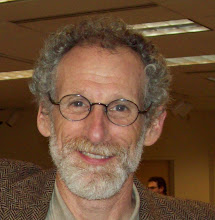Ms. Khan has been teaching in California for over 19 years and remains enthusiastic about her occupation as a teacher. Currently Ms. Khan is working in a K-6 elementary school with 563 students of which about half are White and most of the rest Hispanic. This school is considered rural with 21.7% of the students enrolled being English language learners. At this school 30.2% of students receive reduced price meals.
Ms. Khan received her credential in 1990 from Chapman University, but did the majority of her course work at the California State University of San Jose, CA. Next year will mark Ms. Khan’s twentieth year of teaching in the elementary grade levels. She has moved around from the third grade, to the second grade, and is now happily placed in a first grade self contained classroom. Ms. Khan received her credential as a bilingual resource teacher, which allowed her to work at various schools and districts in this coastal California area. Ms. Khan’s ability to communicate with students speaking a variety of languages has allowed her to become an excellent teacher in both English and Spanish. She is also a huge asset to the school she currently works at because of her bilingual skills.
Ms. Khan tried various other occupations before finding teaching as her passion. When asked about her personal philosophy on teaching she firmly replies “teaching is the one place where you can really make a difference.” The difference she speaks of is in the lives of all her students on a daily basis. Ms. Khan has taught students of various language levels as well as various socio-economic levels. Before Ms. Khan was a teacher she was a social activist who wanted nothing more than to “see change in the world.” Teaching has enabled her to create visible changes within the lives of her students. Ms. Khan also states that teaching “is fun. The kids are quirky, and they keep me entertained.” Her personal pedagogy is very diverse, she states, “Whatever works.” In the classroom she utilizes a comprehensive style of teaching filled with direct instruction, cooperative learning, pair shares, and group work. Ms. Khan considers herself a “pragmatist, if it works I’ll continue to do it, if not I will change my methods. I am always looking for a better way to teach something.” Jokingly she remarks about how she “is not a stick in the mud like some of the older teachers in the school.” Ms. Khan’s belief of the purpose of public schooling has to do with society; she feels that “every child has the right to schooling and an obligation to society to become a functioning member of the information age.” She wants students to be able to function in a society, and know what is required of them to be a “good citizen.”
Ms. Khan organizes the classroom differently every year depending on the students enrolled in her class. Her classroom is a small portable building, so space is limited, but in general, she encourages students to take on independent responsibilities, and supplies individual attention as much as possible. Her classroom is very colorful with students’ works on most walls. There is a “reading rug area” and a worktable that seats 7 in the corner. The desks are arranged in two straight lines across the room. Instructional strategies used include direct instruction at the front of the class, pair shares during reading on the rug, small groups at various locations of the class, and individual attention at desks as well as at the back table. Ms. Khan has found ways to meet the needs of diverse learners in a climate of standardized instruction by “using your resources, i.e. parents, TA’s, and aides.” The priority is for adults to be working with students. She also utilizes leveled groups for language arts, supplemental materials for understanding, and open-ended activities to engage students in projects. Ms. Khan is a strong believer in students Zone of Proximal Development. She recognizes different levels within the class and engages students in work that is at their level, not above and not below.
How does Ms. Khan stay enthusiastic about teaching after all this time? “When the students get it, I know I am doing the right thing.” She states that nothing makes her happier that when a student gets to move up from remedial reading into grade level reading. She also “loves kids, they make me laugh and I love getting paid for doing something I love.” The rewards of teaching for Ms. Khan really come from the students themselves, but she also loves how every day is different. “I’m a restless person so I need my lifestyle and work to change regularly, or I’ll go insane.” The interactions with students coupled with the creativity of lesson designs, based on the required curriculum are Ms. Khans rewards for a hard day’s work.
This interview has given me insight into a functioning teachers viewpoint on education. I am interested in why some teachers can become so jaded and angry while others such as Ms. Khan remain enthusiastic and pleasant, even in times such as these. The answer lies in they way they see teaching and what gives them pleasure from teaching their students. I also learned that it is okay to take the over prescribed curriculum outlines provided, tweak them a little and make them your own lessons, lessons that engage the students but are based on the pre-prescribed, unengaging, curriculum materials required by the districts.
WE CAN DO IT, IF WE TRY!
Subscribe to:
Post Comments (Atom)




No comments:
Post a Comment